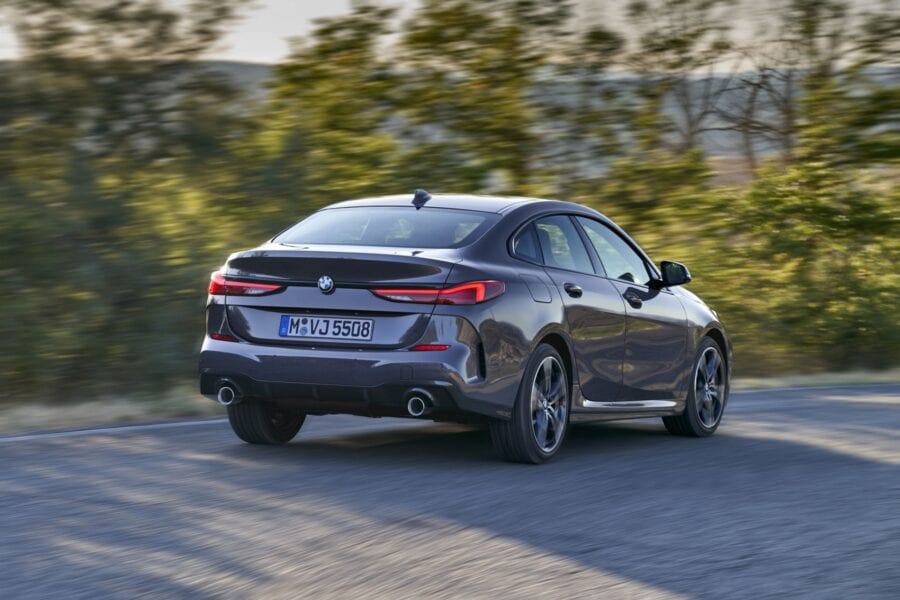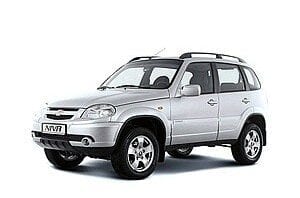
Comparison test: Audi A4 1.8 TFSI, BMW 320i, Mercedes-Benz C 200, Volvo S60 T4
Content
- 4. есто: Volvo S60 T4 Momentum
- 3. Place: Audi A4 1.8 TFSI
- 2. Place: BMW 320i.
- 1. Place: Mercedes-Benz C 200 Avantgarde.
- Basic data
- Technical information
- Basic data
- Technical information
- Basic data
- Technical information
- Basic data
- Technical information
- Exterior (14/15)
- Interior (94/140)
- Engine, gearbox (47 / 40)
- Ride quality (55/95)
- Performance (26/35)
- Security (42/45)
- Economy (43/50)
- Exterior (15/15)
- Interior (108/140)
- Engine, gearbox (59 / 40)
- Ride quality (63/95)
- Performance (29/35)
- Security (41/45)
- Economy (43/50)
- Exterior (14/15)
- Interior (104/140)
- Engine, gearbox (60 / 40)
- Ride quality (65/95)
- Performance (31/35)
- Security (40/45)
- Economy (41/50)
- Exterior (13/15)
- Interior (107/140)
- Engine, gearbox (53 / 40)
- Ride quality (60/95)
- Performance (31/35)
- Security (40/45)
- Economy (47/50)
The same is true of the stereotypes that we are a quartet in and around Bridgestone near Rome, along with more than a dozen editors of Auto Motor und Sport and its international publications and those who have worked with them in for a long time. Has come a long time ago. BMW will be the sportsman in the group, Audi will be a rational choice, neither overly sporty nor overly comfortable, Mercedes will be comfortable but not at all sporty, and Volvo will be too cheap and not up to the competition. Have the predictions come true? Yes, but only partially.
Of course, we wanted to use a diesel engine, but since that was almost logistically impossible and since we had already published a test of the only diesel version of the new C-Class in the previous issue of Auto magazine, we put together a bunch of gasoline models with manual transmissions. Almost. BMW, supposedly the sportiest of the four, had an automatic transmission, a mechanical one simply cannot be obtained. But it's okay: what he got when assessing the comfort of use, he lost in the dynamics of movement and efficiency, since, of course, you have to pay extra for the machine.

Under the bonnet volumes ranged from the 1,6-litre Volvo T4 to 1,8-litre BMW and Mercedes engines, with Audi's XNUMX-litre TFSI filling the gap between the two. All engines are, of course, four-cylinder and all, as it should be these days, turbocharged. Audi is the weakest in terms of power, BMW and Mercedes are in the lead here, but when it comes to torque, the opposite is true - Audi rules here, and Volvo still knows the missing deciliters.
Something else noted this benchmark: what we wanted is an adjustable chassis. Audi failed here because its Audi Drive Select system only controlled the steering and engine response, not the damper settings. The adaptive BMW M chassis and Volvo Four C system made the damping settings for this pair range from sporty stiff to much more comfortable, while Mercedes (as new in this class) had air suspension, which, interestingly, didn't a lot more. more expensive than the BMW M Adaptive Chassis, as the difference in surcharge is less than € 400.
And as it turns out below, about a thousand and a half allowances is one of the best things you can do when buying a C class. A few more words about weight: the last C is also the lightest, followed by BMW, and also the tail is not the biggest. but the heaviest Volvo. It also has the worst weight distribution, with 60 percent going to the front wheels. On the other hand, BMW has an almost perfect layout, 50:50, Audi and Mercedes, of course, in the middle, Audi with 56 and Mercedes with 53 percent of the weight in front.
4. есто: Volvo S60 T4 Momentum
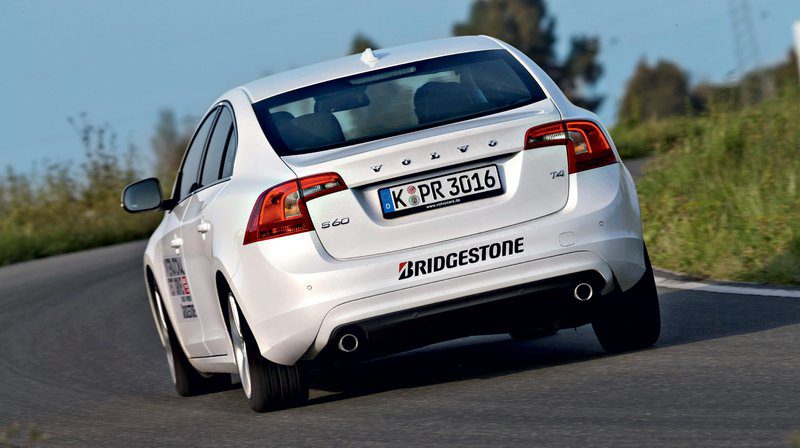
Volvo, being an Italian brand, has always found itself somewhere between popular cars and premium cars in certain car classes. It's the same with the S60. But this time, at least it is not, as is often the case with Volvo, half a class above or below similar competitors. It is the third largest of the four, longer than a BMW, but almost seven centimeters shorter than the longest Audi A4.
However, it has, and this is immediately noticeable inside, the shortest wheelbase. Therefore, there is less space both behind the wheel and in the back seat. And if the first ones, in principle, will not be noticed by those who are below about 185 centimeters, then the absence of the length of centimeters at the back is especially noticeable. With the standard adjustment of the front seat for a passenger with a height of 190 cm, it is very difficult to climb into the rear seats, and in this case it is very cramped to sit on them. Access is also difficult due to the sloping roof, so the head of an adult passenger quickly contacts the ceiling.
The cabin also offers a sense of minimal space and airiness, and the driver and passengers are surrounded by the lowest quality materials of the four, despite the leather on the seats.
On paper, the 1,6-liter turbocharged petrol engine is the third most powerful, just four horses behind BMW and Mercedes. But small displacement and high power have drawbacks: less flexibility at the lowest rpms and generally the least torque. Therefore, when driving, this Volvo evokes the least convincing feeling among the four, a feeling that contrasts with the almost artificially rigid steering wheel, which, instead of being strictly direct, gives a feeling of nervousness.
A chassis with a comfort setup still does not fully absorb road bumps, but there is a lot of body lean in corners. A tighter set-up does not bring salvation: cornering behavior is indeed better, but the chassis becomes unacceptably stiff. This Volvo has no shortage of safety and other equipment, but it still stands out among the four. Proverb How much money, so much music, and in this case it's true ...
3. Place: Audi A4 1.8 TFSI
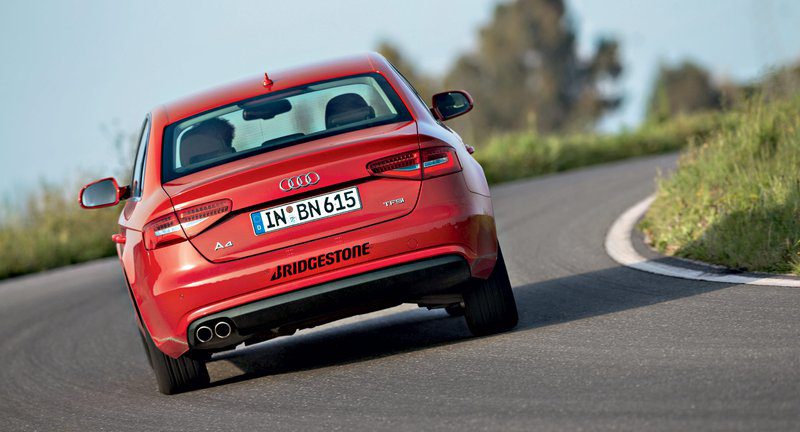
Now, among the four tested Audi A4 will receive the first successor - it is expected that this will happen next year. Therefore, in this society, he can safely be called an old man, but from everything he has shown, this label actually makes him unfair. Therefore, we prefer to write like this: among the four, A4 is the most experienced.
And of the four tested, he was the only one without an adjustable chassis. Of course, this does not mean that it has a bad classic chassis, but it still lags behind its German competitors. Bump pickup and cornering behavior is not as high as in BMW and Mercedes, and the weaker bump softening is most noticeable in the rear seat. There is still plenty of room in Audi, although if you had to choose a car that can travel further in the back seat, you would prefer a BMW or even a Mercedes. The dark interior gave the test Audi a less airy feel, but there really is a lot of room up front. At the rear, the sensation could be described as bearable, and the trunk is completely on par with the competition (except for the Volvo, which deviates noticeably down here).
The 1,8-liter four-cylinder engine is a small surprise. It's the weakest on paper, but on the road it performs just as convincingly as a BMW engine that's two deciliters larger and 14 horsepower more powerful. The reason, of course, is the torque that this 1.8 TFSI has in abundance, even at the lowest revs. The sound is not the most refined, but at least a little sporty. When accelerating at lower speeds, it can sometimes be too loud, but at off-road speeds, the A4 is the quietest of its competitors and also boasts better engine flexibility. And since the shift lever has fairly short, quick and precise movements (with the exception of sometimes from second to third gear), here too it deserves praise. Steering wheel? Less straight forward than the competition, needs more twist, but still gets a lot of feedback. That the road position is safe, but not very dynamic understeer, is not surprising.
The A4 may not be the most advanced of its competitors at the moment, but its age also has an advantage: a price advantage - at the base price of such a motorized version, it is much more affordable than BMW and Mercedes (in addition, they also offer very affordable packages for upcoming cars). retirement age). Everything else is a matter of how bold you are when choosing accessories.
2. Place: BMW 320i.

The BMW 3 Series has always been a sports sedan model, and this time it is no exception. When it came to running on wet or dry trails, the top three were the first choice. But interesting: in slalom the 320i was not the fastest and could not boast of the shortest braking distance. To be precise: For many people, managing your hue can be too direct. But most of all BMW will appeal to those who know how to say that it will be serviced. The rear slides as much as the driver desires, the steering wheel gives all the necessary information about what is going on in the front tires, ESP allows (especially in Sport + mode) just the right slip for driving pleasure.
So, BMW is the sportsman of the four, so when it comes to comfort, it's probably the worst, isn't it? It won't last. By contrast, Mercedes was the only air-sprung car that could run parallel to (or half a wheel in front of) a BMW.
BMW doesn't disappoint in terms of driving dynamics, the same goes for technology. Automatic transmission can be model, up to 100 kilometers per hour the trio is the fastest, in terms of consumption it is the best among the trio of the "second league".
While the 320i lags behind the C-Class in exterior dimensions and wheelbase, there are a few differences in terms of interior spaciousness. There is a little more space behind, the trunk is the same size and about the same usability as in Mercedes and Audi, there is more than enough space in the front. There is no shortage of comfort in the cabin also because the adaptive damping setting is really convenient (almost like in a Mercedes), and we attributed the minus to the triple in terms of measuring noise in the cabin (here it is the loudest) and in the cabin. the quality of some pieces of plastic inside. They are too different from other materials used (for example, the middle of the dashboard) and do not belong to a premium car. And what other electronic safety assistant might come as standard, right, BMW?
But still: for those who want a sportier feel in their car, BMW remains the top choice. But he, at least in this society, is not the best.
1. Place: Mercedes-Benz C 200 Avantgarde.
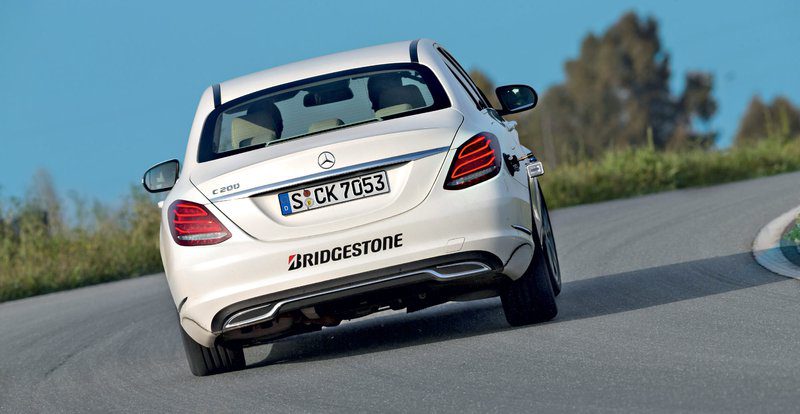
The victory of the C-class is not really a surprise, as none of these three manufacturers are sending their new trump card in this class, which is so important for them (although in reality less and less) to fight to be defeated. ... older competitors. More surprising is how the C 200 came to an (otherwise very close) victory. Do you expect it to be better than a sporty BMW between cones and under braking? That his steering gear will get a higher rating? That it will be the leanest of the four?
The steering, for example, is not as precise as the BMW's, but the vast majority of drivers, even faster ones, will find it more enjoyable. Since it doesn't have the last percentage of precision and directness, it's a bit more comfortable for the vast majority of everyday use. Of course, 18-inch wheels are an advantage in road position (at an additional cost), but the C can afford it thanks to its excellent air suspension, because despite the low and stiff sidewalls, it remains comfortable when the driver wants it. Understeer is a little more than in a BMW, the rear can be lowered, perhaps even more easily than in a BMW, but interestingly the ESP otherwise (as in a BMW) allows for some slippage, but when the driver limits this by electronically installed, it excels, the reaction is quick and sharp. It not only levels the car and slows down efficiently and quickly, but also gives the feeling that it wants to punish the driver's recklessness, as it slows down much more than competitors in the same extreme maneuver and does not allow the driver to add gasoline. more. By the way: when downshifting in sport mode, the engine itself adds intermediate gas.
The engine is only slightly behind the BMW (and Volvo) in terms of power, but the rather large gear ratios and the fact that the engine itself isn't the liveliest means the C 200 is the worst of the competition in terms of agility, especially in higher gears or at low speeds. . As soon as the tachometer needle starts to move towards the middle, it easily cuts with them. The engine doesn't sound the nicest (Audi and BMW are ahead here), but overall the motorized C is the second quietest of the four, and is reasonably quiet as well (unlike the diesel C 220 BlueTEC, which can be a little loud at lower speeds) .
Even otherwise, the feel in the cabin is excellent, as it feels airy, the materials are good, and the workmanship is excellent. Interestingly, Mercedes decided that Comand's excellent online system has dual controls, a rotary controller and a touchpad. Unfortunately, when using the rotary knob, it mounts into the driver's wrist rest. The electronics do a good job of filtering between desired and unwanted inputs, but errors can occur - and a touchpad on top of a rotary control knob would be the best solution. There is no shortage of electronic security accessories – and many of them are included in the base price.
At the back, the Mercedes is just as spacious as the BMW, so here it keeps up with the competitor, the trunk is the same on paper, but less useful in shape, but even that didn't take away so many points that it slipped behind BMW in the overall standings. Most interestingly, with the arrival of the new C, the distinction between a sporty BMW and a comfortable Mercedes has really come to an end. They both know both, only one of them is a little better.
Text: Dusan Lukic
Volvo S60 T4 Momentum
Basic data
| Sales: | Volvo Car Austria |
|---|---|
| Base model price: | 30.800 € |
| Test model cost: | 50.328 € |
| Calculate the cost of auto insurance | |
| Acceleration (0-100 km / h): | 8,8 with |
| Maximum speed: | 225 km / h |
| Mixed flow ECE: | 6,4l / 100km |
Technical information
| engine: | 4-cylinder - 4-stroke - in-line - turbocharged petrol - displacement 1.596 cm3 - maximum power 132 kW (180 hp) at 5.700 rpm - maximum torque 240 Nm at 1.600–5.000 rpm. |
|---|---|
| Energy transfer: | front wheel drive engine - 6-speed manual transmission - tires 235/45 R 17 W (Pirelli P7). |
| Capacity: | 225 km/h top speed - 0-100 km/h acceleration in 8,3 s - fuel consumption (ECE) 8,6/5,1/6,4 l/100 km, CO2 emissions 149 g/km. |
| Mass: | empty vehicle 1.532 kg - permissible gross weight 2.020 kg. |
| External dimensions: | length 4.635 mm - width 1.865 mm - height 1.484 mm - wheelbase 2.776 mm - trunk 380 l - fuel tank 68 l. |
Mercedes-Benz C 200
Basic data
| Sales: | Autocommerce doo |
|---|---|
| Base model price: | 35.200 € |
| Test model cost: | 53.876 € |
| Calculate the cost of auto insurance | |
| Acceleration (0-100 km / h): | 7,8 with |
| Maximum speed: | 237 km / h |
| Mixed flow ECE: | 5,3l / 100km |
Technical information
| engine: | 4-cylinder - 4-stroke - in-line - turbocharged petrol - displacement 1.991 cm3 - maximum power 135 kW (184 hp) at 5.500 rpm - maximum torque 300 Nm at 1.200–4.000 rpm. |
|---|---|
| Energy transfer: | the engine is driven by the rear wheels - 6-speed manual transmission - front tires 225/45 R 18 Y, rear tires 245/40 R 18 Y (Continental SportContact 5). |
| Capacity: | 237 km/h top speed - 0-100 km/h acceleration in 7,5 s - fuel consumption (ECE) 6,8/4,4/5,3 l/100 km, CO2 emissions 123 g/km. |
| Mass: | empty vehicle 1.506 kg - permissible gross weight 2.010 kg. |
| External dimensions: | length 4.686 mm - width 1.810 mm - height 1.442 mm - wheelbase 2.840 mm - trunk 480 l - fuel tank 66 l. |
BMW 320i
Basic data
| Sales: | BMW GROUP Slovenia |
|---|---|
| Base model price: | 35.100 € |
| Test model cost: | 51.919 € |
| Calculate the cost of auto insurance | |
| Acceleration (0-100 km / h): | 7,6 with |
| Maximum speed: | 235 km / h |
| Mixed flow ECE: | 5,9l / 100km |
Technical information
| engine: | 4-cylinder - 4-stroke - in-line - turbocharged petrol - displacement 1.997 cm3 - maximum power 135 kW (184 hp) at 5.000 rpm - maximum torque 270 Nm at 1.250–4.000 rpm. |
|---|---|
| Energy transfer: | the engine is driven by the rear wheels - 8-speed automatic transmission - tires 225/50 R 17 W (Bridgestone Potenza S001). |
| Capacity: | 235 km/h top speed - 0-100 km/h acceleration in 7,3 s - fuel consumption (ECE) 7,7/4,8/5,9 l/100 km, CO2 emissions 138 g/km. |
| Mass: | empty vehicle 1.514 kg - permissible gross weight 1.970 kg. |
| External dimensions: | length 4.624 mm - width 1.811 mm - height 1.429 mm - wheelbase 2.810 mm - trunk 480 l - fuel tank 60 l. |
Audi A4 1.8 TFSI (125 kW)
Basic data
| Sales: | Porsche Slovenia |
|---|---|
| Base model price: | 32.230 € |
| Test model cost: | 44.685 € |
| Calculate the cost of auto insurance | |
| Acceleration (0-100 km / h): | 7,8 with |
| Maximum speed: | 230 km / h |
| Mixed flow ECE: | 5,7l / 100km |
Technical information
| engine: | 4-cylinder, 4-stroke, in-line, turbocharged, displacement 1.798 cm3, maximum power 125 kW (170 hp) at 3.800–6.200 rpm – maximum torque 320 Nm at 1.400–3.700 rpm. |
|---|---|
| Energy transfer: | front wheel drive engine - 6-speed manual transmission - tires 225/50 R 17 Y (Dunlop SP Sport 01). |
| Capacity: | 230 km/h top speed - 0-100 km/h acceleration in 8,1 s - fuel consumption (ECE) 7,4/4,8/5,7 l/100 km, CO2 emissions 134 g/km. |
| Mass: | empty vehicle 1.518 kg - permissible gross weight 1.980 kg. |
| External dimensions: | length 4.701 mm - width 1.826 mm - height 1.427 mm - wheelbase 2.808 mm - trunk 480 l - fuel tank 63 l. |
Overall rating (321/420)
Exterior (14/15)
Interior (94/140)
Engine, transmission (47
/ 40)Driving performance (55
/ 95)Performance (26/35)
Security (42/45)
Economy (43/50)
Overall rating (358/420)
Exterior (15/15)
Interior (108/140)
Engine, transmission (59
/ 40)Driving performance (63
/ 95)Performance (29/35)
Security (41/45)
Economy (43/50)
Overall rating (355/420)
Exterior (14/15)
Interior (104/140)
Engine, transmission (60
/ 40)Driving performance (65
/ 95)Performance (31/35)
Security (40/45)
Economy (41/50)
Overall rating (351/420)
Exterior (13/15)
Interior (107/140)
Engine, transmission (53
/ 40)Driving performance (60
/ 95)Performance (31/35)
Security (40/45)
Economy (47/50)
